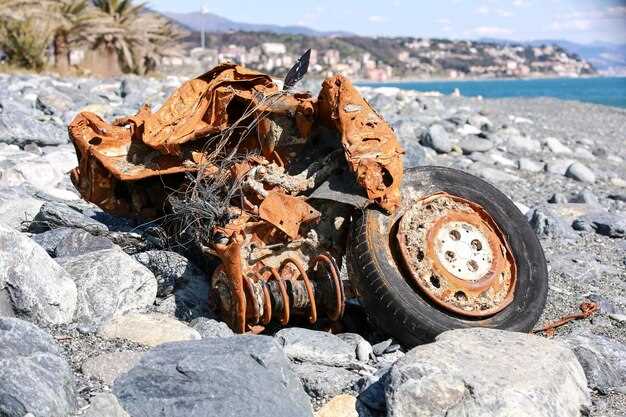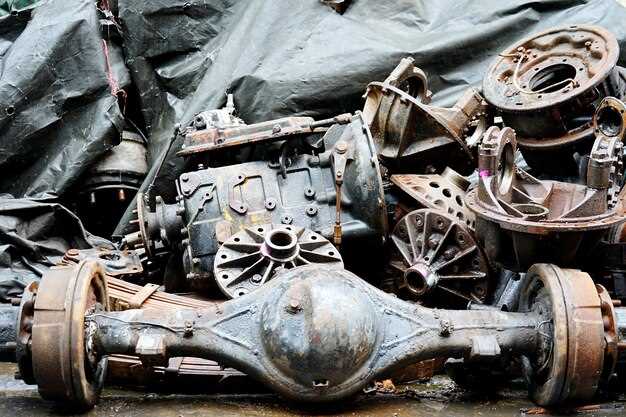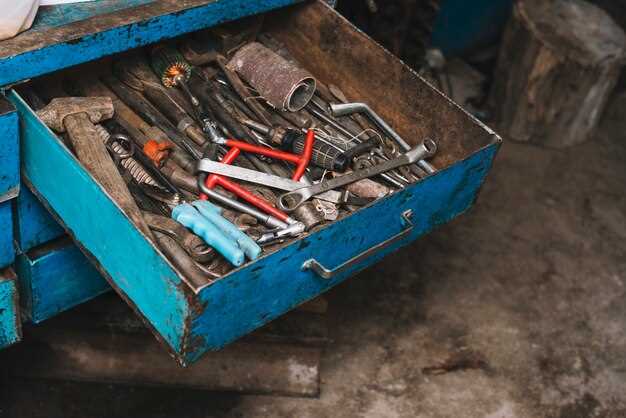
When a car is deemed a total loss, it often finds itself classified as junk, but not all hope is lost. There are numerous valuable components hidden within a wrecked vehicle that can be salvaged and repurposed. Understanding which parts hold the most value is essential for anyone looking to maximize their return on a damaged car.
Among the key parts to salvage, the engine stands out as a prime candidate. It is not only expensive to replace, but many mechanics and car enthusiasts are on the lookout for reliable engines to refurbish. Additionally, various other components such as the transmission, catalytic converter, and electronic systems can also fetch a good price, making them highly sought after in the aftermarket.
Removing valuable parts before sending a vehicle to the junkyard can significantly enhance your financial recovery. In this article, we will delve deeper into the specific parts worth salvaging and provide tips on how to safely extract them to ensure you make the most out of your wrecked vehicle.
Identifying High-Value Components for Resale

When salvaging a wrecked vehicle, identifying valuable parts is crucial for maximizing profitability. Certain components generally retain higher resale value and can be easily sold either individually or as part of a larger inventory. Understanding which parts to prioritize can make a significant difference in your returns.
Engine components are often among the most valuable parts of a car. Complete engines, transmissions, and valuable accessories such as alternators and starters can fetch premium prices. Condition plays a key role; parts with fewer miles or those that have been well maintained are particularly sought after by buyers looking for replacements in their own vehicles.
Another critical area to examine is the vehicle’s electronics. Modern cars are equipped with sophisticated technology including infotainment systems, navigation units, and airbag modules. These electronics are often expensive to replace new, making them desirable for those looking for cost-effective repairs.
Body parts should not be overlooked either. Items such as doors, hoods, and bumpers can be in high demand, especially if they are undamaged and can be sold for use on similar models. Glass components, including windshields and windows, can also be valuable since replacements can be costly for car owners.
Don’t forget about the wheels and tires, particularly if they are in good condition. Alloy wheels can be especially lucrative, as they tend to be lightweight and visually appealing. High-quality tires that still have decent tread wear can attract buyers looking to avoid the steep prices of new options.
Lastly, consider any aftermarket parts or upgrades that may have been installed on the vehicle. Performance enhancements or custom accessories often have dedicated markets, providing additional opportunities for profit.
In conclusion, by carefully assessing the wrecked vehicle for these valuable parts, salvagers can effectively maximize their returns and contribute to a more sustainable approach to automotive repair and recycling.
How to Safely Remove Parts from a Junk Car
Removing parts from a junk car can be a rewarding endeavor, allowing you to salvage valuable components. However, safety should always be your top priority. Here are some key steps to ensure a safe process.
1. Gather Necessary Tools and Equipment: Before starting, collect appropriate tools such as wrenches, screwdrivers, pliers, and safety gear including gloves and goggles. Having the right equipment will make the task easier and safer.
2. Choose the Right Location: Work in a well-ventilated area, ideally outdoors, to avoid inhaling toxic fumes. Ensure the ground is stable and free of obstructions to prevent accidents.
3. Disconnect the Battery: Always start by disconnecting the battery to prevent any electrical hazards. Remove the negative terminal first, followed by the positive terminal.
4. Drain Fluids: Before taking out any components, drain all fluids including oil, coolant, and fuel. Use proper containers to dispose of these fluids according to local regulations, as they can be hazardous.
5. Wear Protective Gear: Equip yourself with gloves and goggles to protect against sharp edges and debris. Steel-toed boots are also recommended to safeguard your feet.
6. Remove Parts Methodically: Start by removing smaller, easy-to-access parts first, like mirrors or lights. Gradually move to larger components such as the battery or engine. Use the correct tools to avoid damaging the parts or injuring yourself.
7. Secure Loose Items: Ensure that all loose items are secured to prevent accidents. Check for any hidden fasteners that may be keeping parts in place before attempting to remove them.
8. Follow Safety Protocols: If you are removing larger parts, consider having a friend assist you. This extra set of hands can help stabilize parts as they are removed and reduce the risk of injury.
9. Organize Salvaged Parts: As you remove parts, keep them organized and labeled. This practice helps to ensure you know where everything is and can facilitate easier reassembly or sale later on.
10. Dispose of Unwanted Parts Responsibly: After salvaging the desired parts, dispose of the remaining vehicle responsibly. Contact local junkyards or recycling facilities to handle the shell of the junk car and any unusable components properly.
Following these steps can make the process of removing parts from a junk car safe and efficient. With careful preparation and attention to detail, you can successfully salvage valuable parts while minimizing risks.
Understanding Market Demand for Salvaged Car Parts

The market demand for salvaged car parts is primarily driven by cost-effectiveness and sustainability. Many vehicle owners and repair shops seek valuable components that can be reused or refurbished at a fraction of the cost of new parts. Given the rising prices of automotive components, salvaged parts offer an attractive alternative for budget-conscious consumers.
Popular salvaged car parts include engines, transmissions, and body panels, which are often in high demand due to their essential role in vehicle functionality. These parts can retain significant value, especially if they come from late-model cars that still have a lot of life left in them. Additionally, certain components, such as airbags, electronic control units, and headlights, are sought after as they can be expensive to replace when procured new.
Market dynamics also play a crucial role in determining the demand for salvaged parts. The availability of specific makes and models can influence prices, as rarer parts may command a premium. Furthermore, trends in the automotive industry, such as the increasing adoption of electric vehicles, may shift consumer preferences toward salvaged parts from older traditional vehicles.
Overall, understanding the market demand for salvaged car parts helps salvage yards, as well as individual sellers, to identify valuable components that can be resold profitably. By tapping into this market, both sellers and buyers can benefit from a more sustainable approach to automotive repairs while accessing essential car parts at lower prices.
